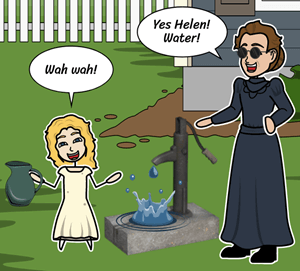
However, Helen doesn’t know what a word is, so she doesn’t understand that things have names. Each finger-combination represents a different letter, and in this way Helen can combine different letters to make full words.
THEMES OF THE MIRACLE WORKER HOW TO
She spends hours showing Helen how to make letters with her fingers. Annie, who was herself blind for much of her life but can now see, teaches Helen using the techniques she learned as a student at the Perkins Institute for the Blind. Until Helen learns to use the tools of communication that Annie is teaching her, she lives in near complete isolation due to her inability to see or hear. Annie teaches Helen how to use sign language to express her feelings, ask questions, learn about the external world, and do all the things that most people take for granted. The Miracle Worker shows that the ability to communicate with others is foundational to nearly every aspect of a person’s life.

By dramatizing the relationship between the young Helen and Annie-and between Annie and the other members of the Keller family-Gibson explores the ways in which people communicate (and fail to communicate), and shows how people can experience a sudden, almost miraculous emotional connection through the “magic” of communication. degree, and later became a prominent author and political activist.

Thanks to Sullivan, Keller went on to become the first deaf-blind person to earn a B.A. William Gibson’s play is based on the true story of Annie Sullivan, a young woman from Massachusetts who in the 1880s succeeded in teaching Helen Keller, a young deaf- blind girl from Alabama, how to communicate through sign language. The central theme of The Miracle Worker is communication.


 0 kommentar(er)
0 kommentar(er)
